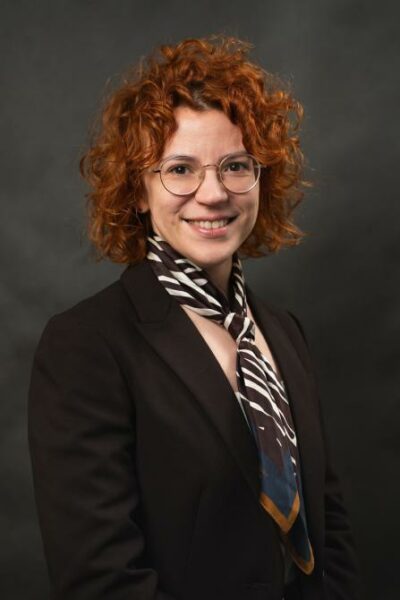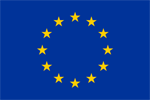RESEARCH EXCELLENCE INITIATIVE
FREEDOM OF RESEARCH – SCIENCE FOR THE FUTURE
“Freedom of Research – Science for the Future” series consists of articles, interviews and short videos presenting research conducted by the winners of the “Freedom of Research” call for proposals
Małgorzata Myl-Chojnacka, PhD
Audism – invisible discrimination
| Author: Olimpia Orządała |
What is audism and what are its roots? What forms does this type of discrimination take? What is the relationship between sign language and the national language? Małgorzata Myl-Chojnacka, PhD from the Faculty of Law and Administration of the University of Silesia in Katowice carried out a project on the situation of deaf people in Poland and the United Kingdom as part of the ‘Freedom of Research’ call for proposals organised by the Research Excellence Initiative. The researcher wanted to determine the causes of discrimination against deaf people. Audism has many faces¬—some more obvious and some completely hidden.
“In my research, I assumed that I was referring both to people who identify themselves as part of the Deaf community, i.e. written with a capital D, and people who do not identify with Deaf culture but have some form of hearing loss or hearing impairment, in which case it is written with a lowercase d”, explains the researcher.
People are generally familiar with the general concept of discrimination and even its specific forms, such as discrimination against women, the elderly or people with disabilities, but according to M. Myl-Chojnacka, PhD, stereotypical thinking emerges at a more detailed level.

Małgorzata Myl-Chojnacka, PhD | Photo by Małgorzata Dymowska
“It struck me that we, as people, are often unaware of what d/Deaf people have to deal with. This touched me personally because when I started working with the d/Deaf, I thought that every d/Deaf person in Poland could read and write in Polish. However, this is not the case”, says Myl-Chojnacka, PhD.
A certain number of d/Deaf people have no knowledge of written Polish or possess only limited knowledge of it. Only when you understand this fact can you realise the importance of sign language for these people. It is important to properly regulate and establish the status of sign language in the Polish legal system. According to the researcher, only by giving the sign language the appropriate status will it be possible to improve the situation of d/Deaf people, including in education, as well as in terms of access to information and healthcare. Poland has a law dedicated to sign language, which is a consequence of the fact that we are a signatory to the international Convention on the Rights of Persons with Disabilities.
“This convention explicitly states that sign language is a fully-fledged form of communication and meets the requirements of a language. As a party to this convention, we had to adopt appropriate regulations,” explains the researcher.
Myl-Chojnacka, PhD studied the situation in the United Kingdom, where the approach to the d/Deaf is better than in Poland. In our country, unlike in the United Kingdom, access to sign language interpreters is limited. Special regulations have been adopted there on this issue, which may inspire changes in Polish law. We also have specific legal regulations to help people with disabilities who are discriminated against—we have a law on sign language and other means of communication for d/Deaf people and a law on ensuring accessibility for people with special needs. Within this law sign language has been recognised as a tool for accessibility. The first of these laws is currently under review.
“It is worth mentioning that in Poland, two languages actually function in parallel: Polish and Polish sign language, which is used by the d/Deaf, and on top of that there is also a sign language system”, says the researcher from the Faculty of Law and Administration.
Polish sign language has its own grammar and vocabulary, while the sign language system consists of supporting speech and articulation with specific sign language signs. It is not a natural language for d/Deaf people—it is actually an artificial form that they are often unfamiliar with. The act recognises Polish sign language as a natural means of communication, while the sign language system is recognised as the basic form. This creates a certain dissonance, as it is unclear which language should be used, for example, by officials or interpreters employed in public institutions. M. Myl-Chojnacka, PhD emphasises the need to change these legal regulations. Not only lawyers but also d/Deaf people are involved in the works aimed at amending the legal act concerning this issue.
The Accessibility Act applies to public authorities and entities financed to a significant extent from public funds. However, these are not all places where the d/Deaf need the support of an interpreter. For example, courts are not subject to this Act. Accessibility by legal protection authorities is governed by separate regulations.
“I was once helping a friend who is part of the d/Deaf community. We wanted to see how certain solutions work in practice. The office’s website mentioned the availability of interpreters, but with a note that such requests should be made several days in advance. The first basic form of contact was by telephone. This raises the question: how is a d/Deaf person supposed to call the office themselves and indicate that they need a sign language interpreter? So, I called the office, where I was told that if the person is an adult, they have to arrange it themselves, e.g. by sending an email. And here another problem arises: not every d/Deaf person will be able to send such message because not every d/Deaf person can write it. So, in theory, we have accessibility, but in practice the situation is quite different”, says M. Myl-Chojnacka, PhD.

Polish sign language has its own grammar and vocabulary, while the sign language system consists of supporting speech and articulation with specific sign language signs | Photo by Freepik
The researcher also points out that, in reality, anyone can apply to be a sign language interpreter—qualifications are not verified. The amendment to the act on the sign language may help to establish a clear framework for interpreter qualifications, but it will not solve all the problems. One of these is the poor quality of sign language interpreter training, as well as the lack of clear requirements regarding their competence and the qualifications of teachers working with d/Deaf people. Currently, there is a shortage of interpreters with the relevant experience and qualifications to interpret in specialised fields, such as law and medicine.
“The situation of the d/Deaf has been completely ignored for many years. In fact, it is only now that people are starting to talk about it. There are even popular science publications that are doing a great job of raising awareness of this issue”, says the lawyer.
Myl-Chojnacka, PhD points out that, unfortunately, there is still a lack of awareness of what d/Deaf people struggle with and what their needs are. Added to this is fear and uncertainty—some people do not know, for example, how to initiate contact with a d/Deaf person, what to say or how to behave. It is crucial to raise public awareness and spread knowledge on this subject.
The researcher notes that in the United Kingdom and Sweden, there is also a different level of awareness that the d/Deaf have—they know their rights such as how many hours of interpreting they are entitled to per week. In Poland, however, this is not guaranteed and various applications have to be submitted all the time. The situation is also different at universities—M. Myl-Chojnacka, PhD participated in meetings with students at the University of Manchester and the University of Stockholm, where sign language interpreters are always present in the accessibility offices, thanks to which d/Deaf people can fully participate in classes without any problems, which later translates into increased opportunities for them on the job market.
In Poland, there are still public institutions that do not provide even minimal support for d/Deaf people. According to the researcher, this problem is not due to ill will on the part of the authorities—it is systemic in nature and often linked to insufficient funding.
Induction loops enabling hearing with hearing aids have been installed in the buildings of the University of Silesia, including the Faculty of Law and Administration. It is also possible to use a sign language interpreter. These issues are handled at our university by Anna Nawrot, Coordinator for Accessibility.
“I was delighted when our university launched basic Polish sign language courses. I took part in them myself. It was the first stage of my learning, which I later continued on my own. I realised that when working with d/Deaf people and researching the situation of audism in Poland, I needed to use their language. I think that learning basic phrases, even just simple pleasantries, does not require much effort and would certainly be the first step towards increasing knowledge and awareness. And that would already be a great success, which could accelerate legal changes”, concludes M. Myl-Chojnacka, PhD.
Article ‘Audism – invisible discrimination’ was published in the March issue of USil Magazine No. 6 (326).





